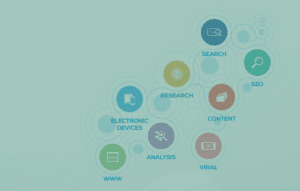APIs have become a buzzword in the world of technology and business. They are the backbone of modern software development, powering everything from mobile apps to cloud computing. As a marketer, you may have heard of them, but what are APIs? And how can they benefit your organization?
What are APIs?
Application Programming Interfaces (APIs) can be technical and complicated. Some people have misconceptions about what they are and how they work. For example, you may think that an API is the same thing as a website or mobile app, or that they are only used by large technology companies. But that’s not the case. APIs are everywhere.
APIs can be confusing for a variety of reasons. They don’t often come with much context, are constantly changing to keep up with technology, and integrating them usually involves some coding. According to MuleSoft, only 56% of organizations have a mature API strategy that enables non-technical people to integrate data sources. As a result, we’re here to provide a clear definition, education, and resources on APIs so you can understand and use them to drive growth in your organization.
In layman’s terms, APIs allow different software programs to communicate. By exchanging data, APIs can:
- Create new software applications
- Add functionality to an existing application
- Integrate different software systems
They’re just a faster way to access data and build functionality by leveraging another software component or service.
Categories of APIs
- Public: Public APIs are open-source, meaning anyone can access and use them and use them for free. There are tons of examples of public APIs that provide data on the weather to sports to just about anything else.
- Partner: Partner or third-party APIs require specific rights or payment to access. Either you are doing business with an organization that provides you with access or you pay for access — such as the case with APIs as a product. Examples of partner APIs include PayPal or those you use to integrate your CRM with other tools.
- Private: Private or internal APIs are the ones built by your internal development team for your unique use case or needs.
There are other ways to segment APIs, but this is the broadest categorization. The most common type of APIs within these categories are Web or REST APIs. They use HTTP requests to retrieve or manipulate data and typically return data in a standard format such as JSON or XML.
Examples of APIs In Marketing
APIs are traditionally used by developers to build and integrate software applications or automate processes. If they’re leveraged properly, they enable organizations to create new products and services more quickly and efficiently. This is a marketer’s dream. This means you can better optimize your marketing efforts, and improve customer engagement and the overall customer experience.
Some of the most common API uses in marketing include:
- Social media management: Many social media management tools utilize APIs from platforms like Facebook, Twitter, and Instagram to gather data on audience engagement, track campaign performance, and analyze competitor activity. Or, another way they’re used — apps, where you edit photos, use an API that integrates with social media platforms to automatically post your edited photos.
- eCommerce: APIs are widely used in the eCommerce industry to gather product data, track inventory levels, and process payments. Retailers can also use APIs to integrate their eCommerce platforms with third-party services like shipping and logistics providers.
- Customer Relationship Management (CRM): APIs are an essential tool for CRM systems, allowing marketers to gather and manage customer data across multiple channels. This data can be used to create targeted marketing campaigns and improve customer retention.
- Email marketing: APIs are used in email marketing tools to gather data on email opens, clicks, and conversions. This data can be used to optimize email campaigns and improve ROI.
- Search Engine Optimization (SEO): Web APIs are responsible for the data you get from SaaS platforms like SEMrush and Moz. You can use these kinds of APIs to get real-time keyword results, track rankings, and much more.
- Advertising: APIs are used in advertising platforms to gather data on ad performance and optimize campaigns in real time. This helps marketers to maximize their ad spend and reach their target audience more effectively.
Every time you’re adding another connected app to your integrations in Hubspot, you’re using an API! But there are other ways to use APIs to innovate and add value for your customers. For example, a travel company can use APIs to create an app that provides real-time information about flights, hotels, and tourist attractions. Or a marketing agency can use APIs to get data on their clients’ products and develop comprehensive reporting and dashboards they can sell as part of their services.
As you can see, the use cases for APIs and marketing are limitless and the benefits are significant.
Benefits of APIs to Marketers
APIs provide many benefits to marketers, they:
- Enable innovation: APIs provide a powerful mechanism for creating new products and services by allowing developers to leverage functionality and data provided by other systems.
- Improve your efficiency: APIs can streamline business processes by enabling different software systems to exchange data and automate tasks.
- Enhance the customer experience: APIs can enable organizations to create personalized and engaging customer experiences by leveraging data from multiple sources.
- Increase your revenue: APIs help organizations create new revenue streams by monetizing data and functionality provided by their systems.
These benefits are impactful, but you don’t have to develop a product or application to use data from an API. APIs can provide you with valuable insights into your consumers, competitors, and products. By using APIs to collect and analyze data from various sources, you can gain a deeper understanding of your target audience and create more effective marketing campaigns.
Using APIs to Identify Insights
Primarily product and software development roles work with APIs because they can be complex and require special skills and expertise to implement and integrate them. But in reality, they have a much greater application. Marketers who have the right knowledge and resources can use APIs to get more data, for less. When you take this approach, you increase your chances of identifying unique insights — while saving your organization money.


